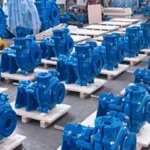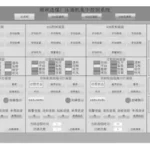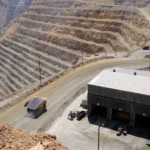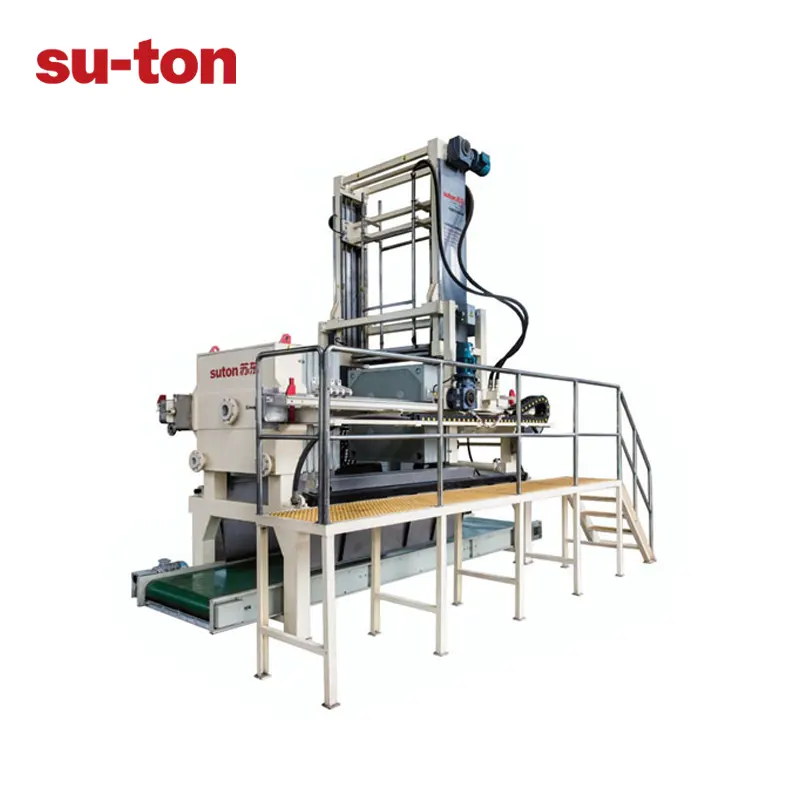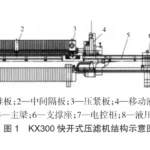1 Coal slurry dewatering in coal preparation plant before transformation
The existing production process of Tangkou Coal Processing Plant is that 50~0.75mm grade raw coal adopts pressurised two-section and two-product heavy-medium cyclone main re-election, 0.75~0.25mm grade coarse coal slurry adopts the combined process of slurry heavy-medium separation, and 0.25~0mm fine coal slurry adopts thickening+filter-pressing recovery.
The proportion of particle size less than 0.074mm in the filter press feed of the coal preparation plant reaches 58.56%, and the proportion of particle size less than 0.045mm reaches 48.11%, with the content of ultrafine coal slurry, the slurry is more viscous, and it is difficult to dewater in the conventional filter press, and the moisture of the cake reaches about 25%~26%, with the high moisture content, and the calorific value reaches 16.90~17.57MJ/kg. In order to solve the problems of high moisture, low calorific value, difficult blending and low selling price of filter-pressing coal sludge, the coal preparation plant used drying system to dewater filter-pressing coal sludge for the second time, but due to the reasons of heat source and environmental protection, the coal sludge drying system was discontinued, therefore, it is urgent to explore the environmentally friendly, reliable and efficient methods of deep dewatering of coal sludge to further reduce the moisture of the sludge, improve the calorific value of the sludge, and increase the efficiency for the coal preparation plant.
2Introduction of Ultra High Pressure Filter Press
Coal slurry ultra-high-pressure filter press technology is a new type of fine-grained material dewatering technology developed in recent years, adopting ultra-high water pressure to press the material, the maximum pressing pressure can reach 8~10MPa, which is 10 times bigger than the pressure of the current conventional filter press, compared with the conventional filter press, the average reduction of moisture of coal slurry products is 8%~10%, and the average increase of calorific value is 1.67-2.09MJ/kg, after crushing treatment, the final state of coal slurry products is similar to granular, which can be sold separately or blended with product coal. /After crushing, the final state of coal slurry product is similar to granule, which can be sold separately or blended into product coal. The biggest feature of the ultra-high pressure filter press compared with the ordinary filter press is that it can carry out the second pressing, and its process flow is shown in Fig. 1.
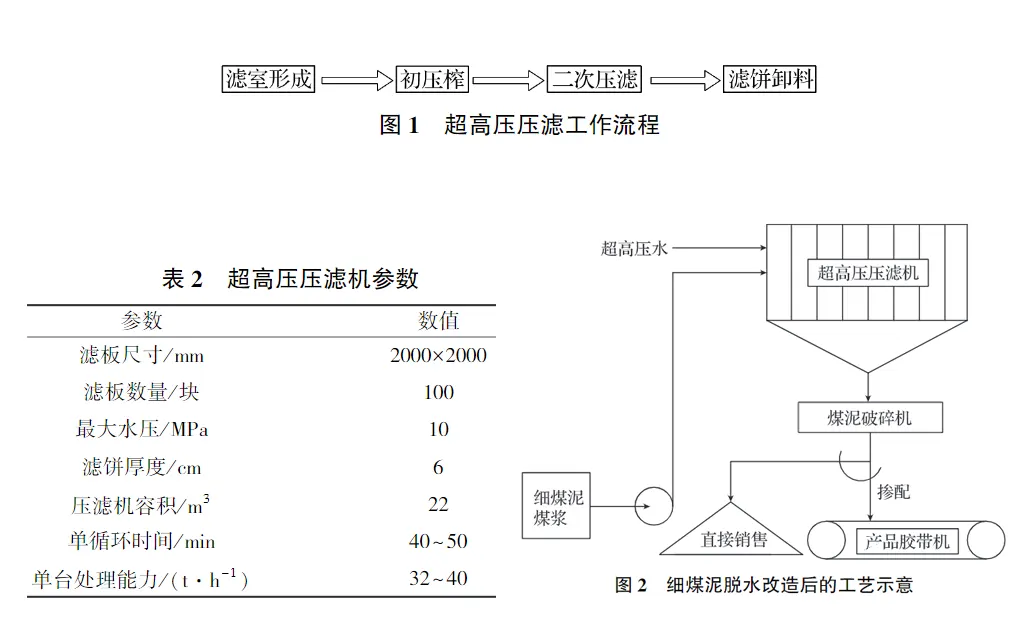
The high pressure filter press workflow procedure can be divided into 4 steps.
(1) Formation of the filter chamber: the filter plate is pressed tightly, and a closed filter chamber is formed between the adjacent filter plates.
(2) Primary pressing: the feed pump sends the coal slurry water into the filter chamber, and when the filter chamber is full, the pressure of the feed pump is used to press the coal slurry in the primary pressing.
(3) Secondary pressing: after the primary pressing, the feed of coal sludge water is closed, and the high pressure liquid is injected into the filter chamber by the press pump to achieve the secondary pressing of the filter cake for further dewatering. (4) Cake unloading: after the completion of the second pressing, the filter plate is loosened and the cake is transported away by the conveyor under the filter press.
3 Coal processing plant coal slurry depth dewatering transformation
3.1 The main equipment of the coal plant transformation design selection of ultra-high pressure filter press filtration area of 800m2, the relevant parameters are shown in Table 2.
3.2 The transformed process flow The bottom flow of the thickening pond is pumped to the feed barrel of the filter press, and then transported to the ultra-high-pressure filter press for deep dewatering of coal slurry by the feed pump of the filter press. After the feed is finished, the high-pressure press pump is activated, and most of the water in the slurry of the coal slurry is extruded to achieve the depth dewatering by the press pressure of 7-10MPa. The coal slurry after the depth dewatering is broken through the crusher and then transported to the coal slurry shed and landed, and also can be blended and sold online by the coal slurry blending tape machine. After deep dewatering, the coal slurry is crushed by crusher, and then transported to the coal slurry shed by belt conveyor, and can also be blended into the product online through the coal slurry blending belt conveyor.
3.3 Workshop arrangement Introduction The workshop arrangement of ultra-high-pressure filter press (Fig. 3) is similar to that of traditional filter press, which consists of filter press layer, cake collection, crushing layer, feeding drum and pump layer. Crushed dry coal slurry, both through the belt conveyor to the existing coal slurry shed storage, can also be unloaded through the unloader to the dry coal slurry blending belt conveyor, blending to the product belt conveyor for sale, strong flexibility.
3.4 Coal slurry dewatering effect after transformation by ultra-high pressure filter press The assay results of filter cake after adopting ultra-high pressure filter press are shown in Table 3.
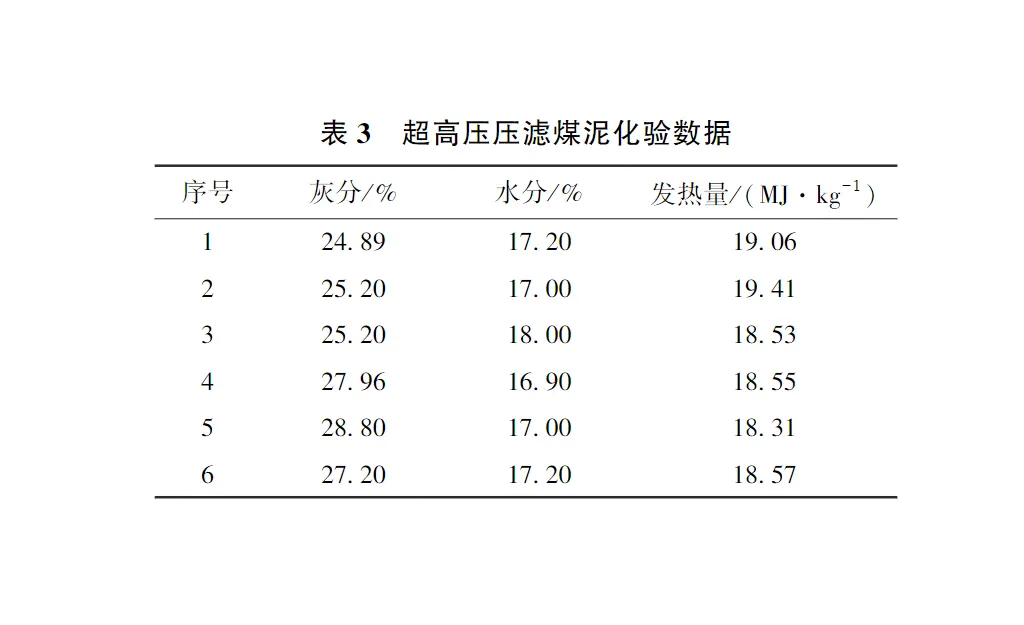
As shown in Table 3, after the dewatering treatment of Tangkou coal slurry by ultra-high-pressure filter press, the moisture is in the range of 16.9%~18%, which is about 8% lower than that of the filter cake before the transformation, and the effect of water reduction is remarkable.
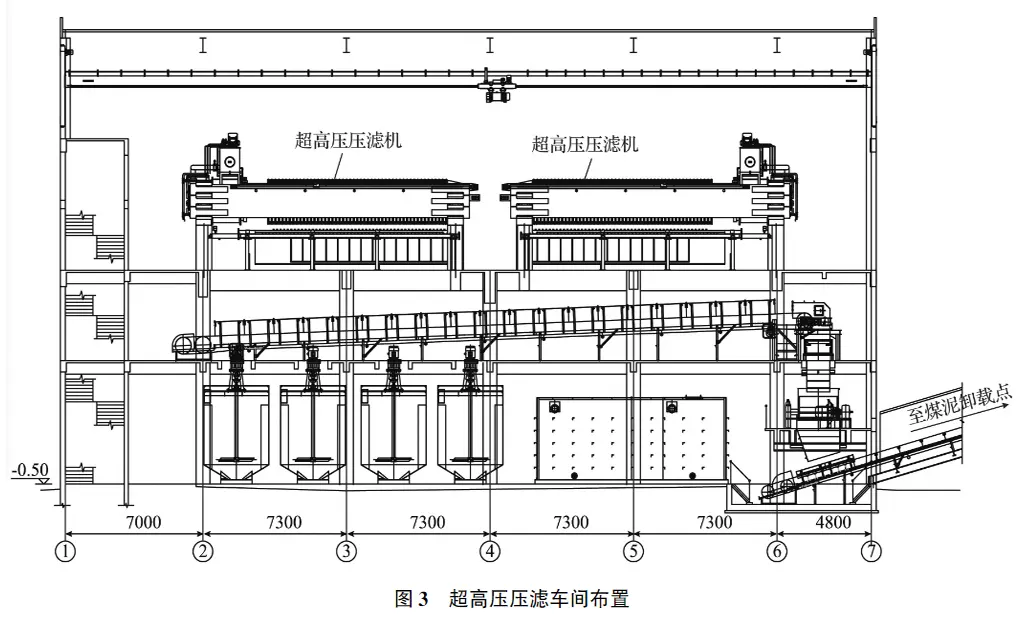
4 Conclusion after the coal plant adopts ultra-high pressure filter press technology to dewater the fine coal slurry in depth, the moisture of the slurry can be significantly reduced, the heat content can be significantly increased, the quality of the slurry can be improved, and the slurry can be sold directly after the filter press, and can also be blended and sold with the products, which solves the problem of high moisture and difficult sales before the transformation, and realises the reduction of the slurry, and improves the enterprise's economic efficiency.
Welcome to call us for consultation, technical exchange, and material experiment.
 Plate and frame chamber diaphragm filter presses
Plate and frame chamber diaphragm filter presses

